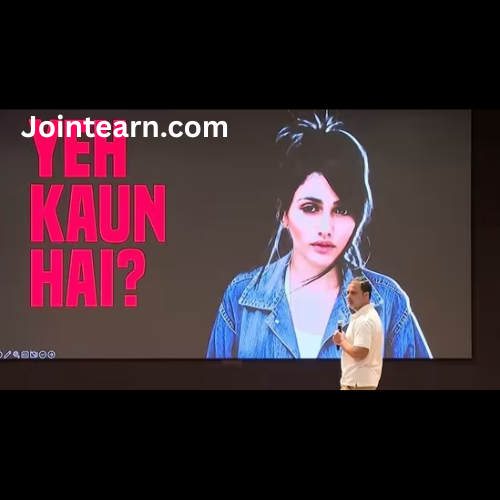As Bihar heads into its assembly elections, the interplay of caste affiliations and welfare schemes is shaping the political landscape across the state. On a typical morning in Gaya’s Khizarsarai, a crowded photocopy shop reflected the pulse of the electorate. Residents lined up to photocopy their voter identity cards, a ritual not just for administrative purposes, but increasingly for participating in the documentation processes required to avail government welfare schemes. These schemes, which promise direct financial benefits or services, have become critical tools for political parties attempting to expand their influence beyond traditional caste bases.
For Vijay Singh, a 72-year-old Rajput, welfare measures have been a decisive factor in his support for Chief Minister Nitish Kumar and the National Democratic Alliance (NDA), particularly the Bharatiya Janata Party (BJP). Singh, who had recently received an enhanced old-age pension of ₹1,100 under state schemes (up from ₹400 previously), also benefited from a free orthopedic surgery at a private hospital in Patna under the Ayushman Bharat scheme. “I will submit my documents to a JD(U) functionary for any new schemes after the elections,” Singh said, highlighting how government programs influence voter behavior.
Standing beside him, Roshan Rai, a Bhumihar, expressed similar intentions, stating he would approach a local BJP worker to submit his documents for enrolment in a promised job scheme. The NDA has pledged 10 million jobs to counter the Rashtriya Janata Dal’s (RJD) ambitious promise of a government job for each household—a key battleground in voter mobilization strategies.
Across the Falgu river, RJD workers collected documents in Pathran village, emphasizing the party’s commitment to employment and welfare. Zafar Ehsan, an RJD cadre, noted that the party’s core supporters—Yadavs and Muslims—remain loyal, particularly in the wake of recent violence that has further polarized local communities along caste lines. The murder of Dularchand Yadav, a supporter of Prashant Kishor’s Jan Suraaj, allegedly by followers of JD(U) candidate Anant Singh, intensified these divisions. Ehsan said, “Some Yadavs voting for NDA will now back RJD,” illustrating how caste loyalties are being reinforced by recent events.
Meanwhile, upper-caste Bhumihars, Banias, and Brahmins continue to lean towards the NDA, with JD(U) retaining influence over Kurmis, Extremely Backward Castes, and Maha Dalits, groups considered among Bihar’s most socio-economically vulnerable. Smaller NDA allies, such as Chirag Paswan’s Lok Janshakti Party, Jitin Ram Manjhi’s Hindustan Awam Morcha (HAM), and Upender Kushwaha’s Rashtriya Lok Morcha, are working to consolidate Dalit and Kushwaha votes in their respective strongholds.
On the opposition side, the RJD-led alliance also relies heavily on caste-based support, with Muslims and Yadavsforming the core of RJD’s voter base, Left parties appealing to poor and landless Dalits, and Mukesh Sahani’s Vikasheel Insan Party courting Mallah votes. Even in villages such as Gehlaur, younger voters like Sharavan Kumar Manjhi, a 21-year-old farm laborer, emphasized the enduring significance of caste-linked political representation. He credited HAM and Jitin Ram Manjhi with providing political voice and visibility to marginalized communities, invoking the legacy of Dashrath Manjhi, the “Mountain Man” of Gaya, whose decades-long labor to carve a passage through hills symbolized grassroots empowerment.
However, caste influence is not just a matter of allegiance; it also dictates practical realities. In Arai Keshopur, Vijayraj, a 48-year-old Dalit farm laborer, explained that a local Bhumihar landlord, referred to as “Babu Saheb,” significantly influences the community’s voting choices. Living on government-allotted land, Vijayraj and his fellow villagers depend on the support of upper-caste landlords for security and sustenance. “If the government forces us to leave, we will have to go. But Babu Saheb will help, and that is why all of us listen to him,” he said, highlighting the intertwined nature of socio-economic dependence and political behavior in rural Bihar.
Across the state—from the Kosi-Seemanchal belt in the north to the Patna division in central Bihar and Magadh in the south—caste remains a dominant factor in electoral decision-making, even as Nitish Kumar retains popularity across social groups. Attempts to move beyond caste-based politics have found limited traction, largely confined to educated urban voters. The RJD has sought to extend its appeal to Kushwaha and Keori communities beyond its traditional Yadav-Muslim base, while JD(U) and other NDA allies similarly aim to attract smaller Dalit groups and economically disadvantaged sections.
Political analysts emphasize that Bihar’s 2025 assembly elections are defined less by ideology or policy and more by assembly seat-level caste calculations. Abdul Qadir, a retired professor from Magadh University, observed, “This is not a class-based contest as in cities like Delhi. The election is being fought along caste lines, with no statewide wave favoring any coalition. Caste combinations play a crucial role in determining the winners.”
Qadir noted historical patterns in Magadh, where the RJD-led alliance won 20 of 26 assembly seats in 2020, largely due to Yadav-Muslim solidarity against the BJP. He added that there was also a transfer of labor-class votes toward Left parties, especially the Communist Party of India (Marxist-Leninist). In response, the NDA has attempted to break these entrenched caste combinations through pre-poll welfare sops targeting women and deprived communities. These measures, coupled with promises of jobs and pensions, are designed to sway voters beyond traditional caste lines, though caste identity continues to shape political loyalties in significant ways.
As Bihar completes its two-phase polling on November 6 and 11, the stakes are high for both the NDA and the RJD-led alliance. Welfare schemes, caste affiliations, and local socio-economic dependencies are all intertwined in shaping the electorate’s choices. For many voters, caste remains inseparable from political representation, while welfare schemes provide immediate material incentives that can influence allegiance. Analysts suggest that the final outcomes will hinge on which alliance can better mobilize caste blocs while extending tangible benefits to voters, demonstrating that in Bihar, electoral strategy is as much about social engineering as it is about governance.


Leave a Reply